1939-1945 WW2 BSA Airborne Folding Paratroopers Bike
Now Sold
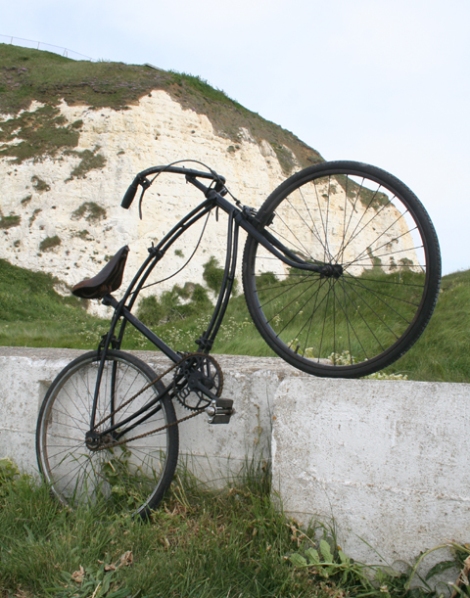
BSA AIRBORNE. Black. Frame number R52631
SUMMARY: This Airborne BSA is in good running order. The rear wheel is not original and pedals are fitted rather than the original bars. The rear tyre is cracked.The saddle is BSA. It looks like original brakes, handlebars, lamp-bracket and levers; the handlebar grips appear original too, with the BSA logo on them. I’m not an expert so please check the pictures yourself.
It is black, which appears to be the original paint. You can see where the BSA Piled Arms transfer was on seat tube, no longer visible. But I can’t see any green paint underneath.
I’m not sure why it’s black rather than green. Perhaps it was used for training service rather than being parachuted into France? My guess is that it was manufactured towards the end of WW2, so was not needed for D-Day, hence the war contract was finished and remaining airbornes were sprayed in black and pedals fitted. I can’t find any references to date it from the frame number of R52631, other than the fact that 70,000 were manufactured.
I like the fact that it’s different. A coat of green paint and some repro pedals would transform this lovely old BSA Airborne into an army machine if that’s what you fancy. Or you can leave it as it is, as a rarer version, and research the history of airbornes to find out why it left the factory painted black.

[More photos at bottom of page]
*****************
BSA Airborne bicycles have become quite sought-after in recent years, and this one is in good operational order. If you fancy a genuine World War 2 vehicle, this model must surely represent the cheapest option.
****************************************************************************

Shows, rallies, local fetes and events make an ideal family outing in the summer.
Taking along a vintage vehicle is a wonderful way for younger members of the family to learn about the fascinating history of this country and contribute to the local community.
It’s easy for them to do some research on the internet and make up information boards for display.
They can dress in period costume (1940’s stuff can easily be found at charity shops and boot sales)
And of course a folding bicycle is just about the easiest vintage vehicle to transport anywhere;
it can be folded into the back of the smallest car …or ridden!
A 62-year-old BSA Airborne Bicycle will soon become a family pet –
What better way to introduce youngsters to our fabulous hobby?

****************************************
The BSA Airborne Bicycle was developed at a time when the only British Troop-carrying glider was the Hotspur. Like the Welbike, transport for the Para’s was needed that was small and could easily be transported. As a result, BSA, who made the M20 Motorbike, developed a bicycle that could be folded in half so a paratrooper could jump out of an aircraft with it. When folded out, it was used as a conventional bicycle. They were used in all the major landing such as D-day and Arnhem.
The BSA airborne bicycle was used in battle, but not as much as originally planned.
The plan appears to have been that the bicycles would be mass produced and make the airborne soldiers mobile once they had landed. It was better and faster than walking.
AIRBORNE
The British Airborne Forces used a few on operations, but as larger vehicles such as the jeep were available by June 1944, the bicycles were far less important.
Some of these bicycles are reported to have been used on the first airborne raid into Norway, as some are reported to have been found in the wreckage of the gliders.
A few of these bicycles appear in memoirs about the battles of 1944-45 and a few show up in photographs – but only a few. Most photographs show them being used in training.
Ironically, when the airborne did use bicycles in great numbers on the advance to Wismar in Germany in 1945, they had to use captured bicycles!
COMMANDO
Photographic evidence shows that a few of these bicycles were carried by Commandos on raids.
On D-Day, June 6, 1944, each Commando unit appears to have had a bicycle platoon though the bicycles seem to have been discarded within a few days.
INFANTRY
Ironically the greatest use of the BSA airborne bicycle in action was by British and Canadian infantry on the invasion Normandy, France (D-Day 1944 June 6) in the second wave. Some had been used on the invasion of Sicily in 1943 by Canadian infantry (Hastings and Prince Edward Regiment “Hasty Pees” re: Farley Mowat).
ARMOUR
Photographic evidence shows that some Canadian and British troops in armoured vehicles acquired BSA airborne bicycles and hung them on their vehicles, apparently for use as runabouts when time and circumstances permitted, just as owners of Recreation Vehicles (RVs) park the big beast and use smaller vehicles to running about on errands.
AIR FORCE
Some BSA airborne bicycles MAY have been taken into combat zones by air force personnel as bicycles are very useful items to have around airfields
black and white photos thanks to http://bcoy1cpb.pacdat.net/bsa_historic.htm
******************
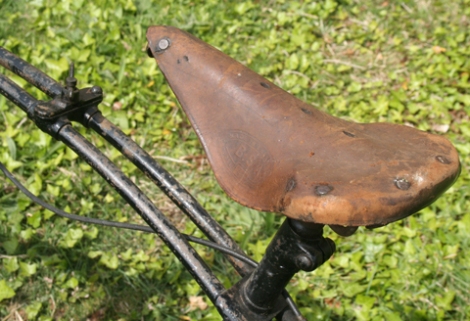
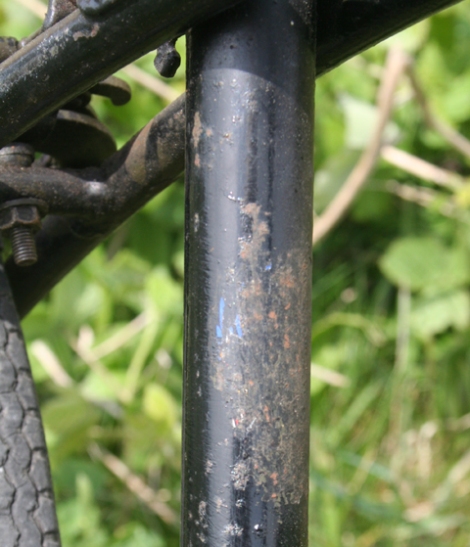



*********************
On the next page you can compare this Parabike with the 1940s Junior version

*********************






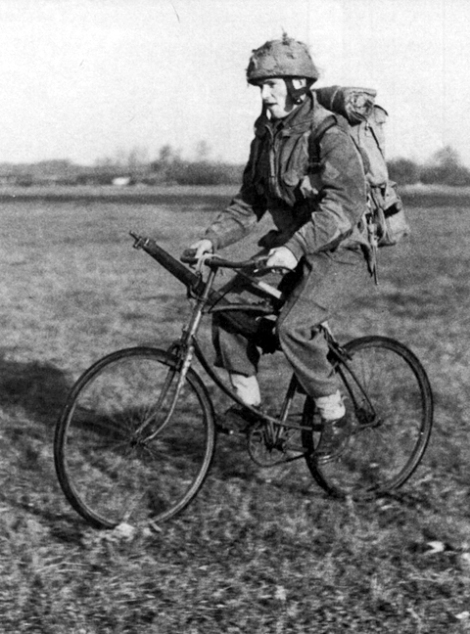
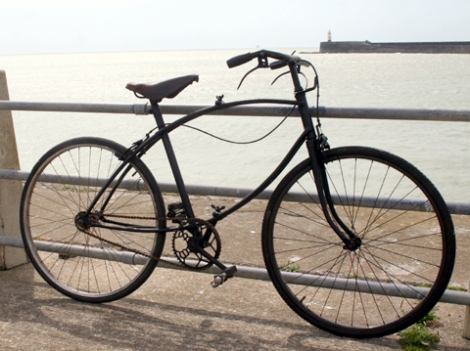
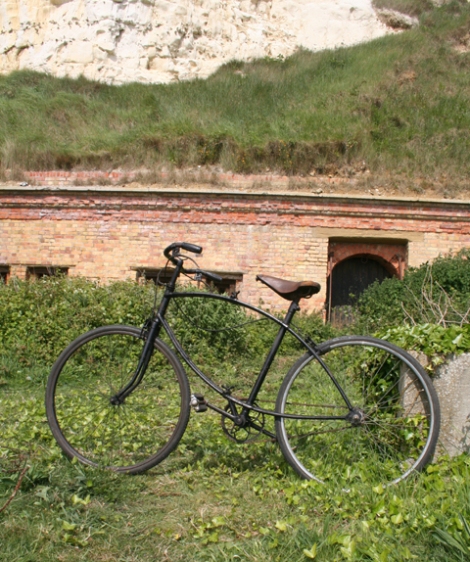






You must be logged in to post a comment.